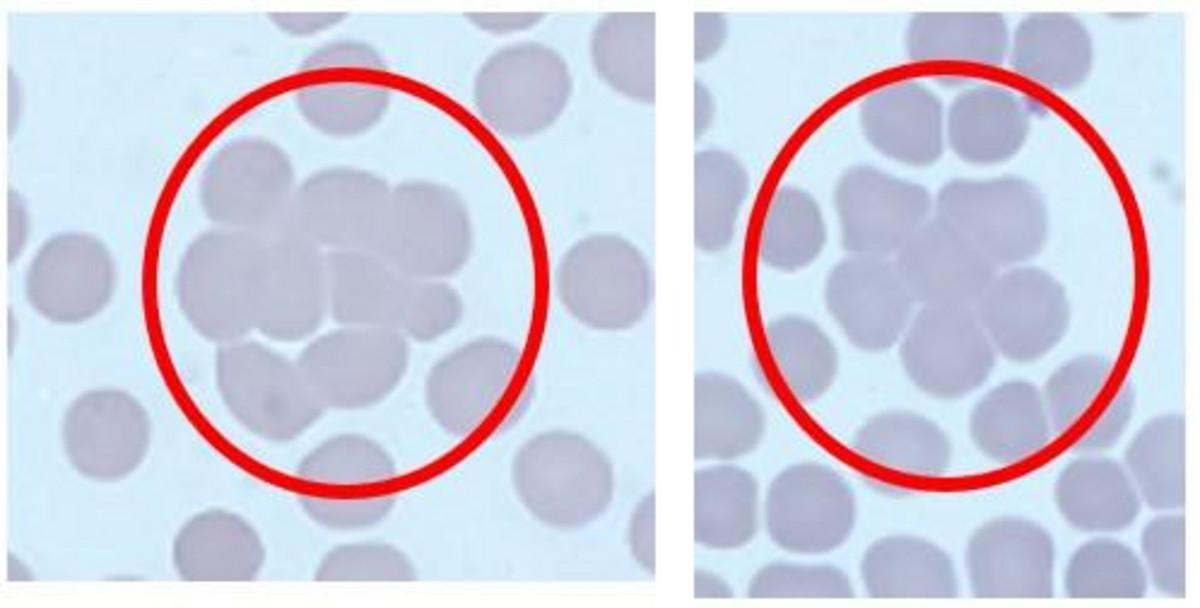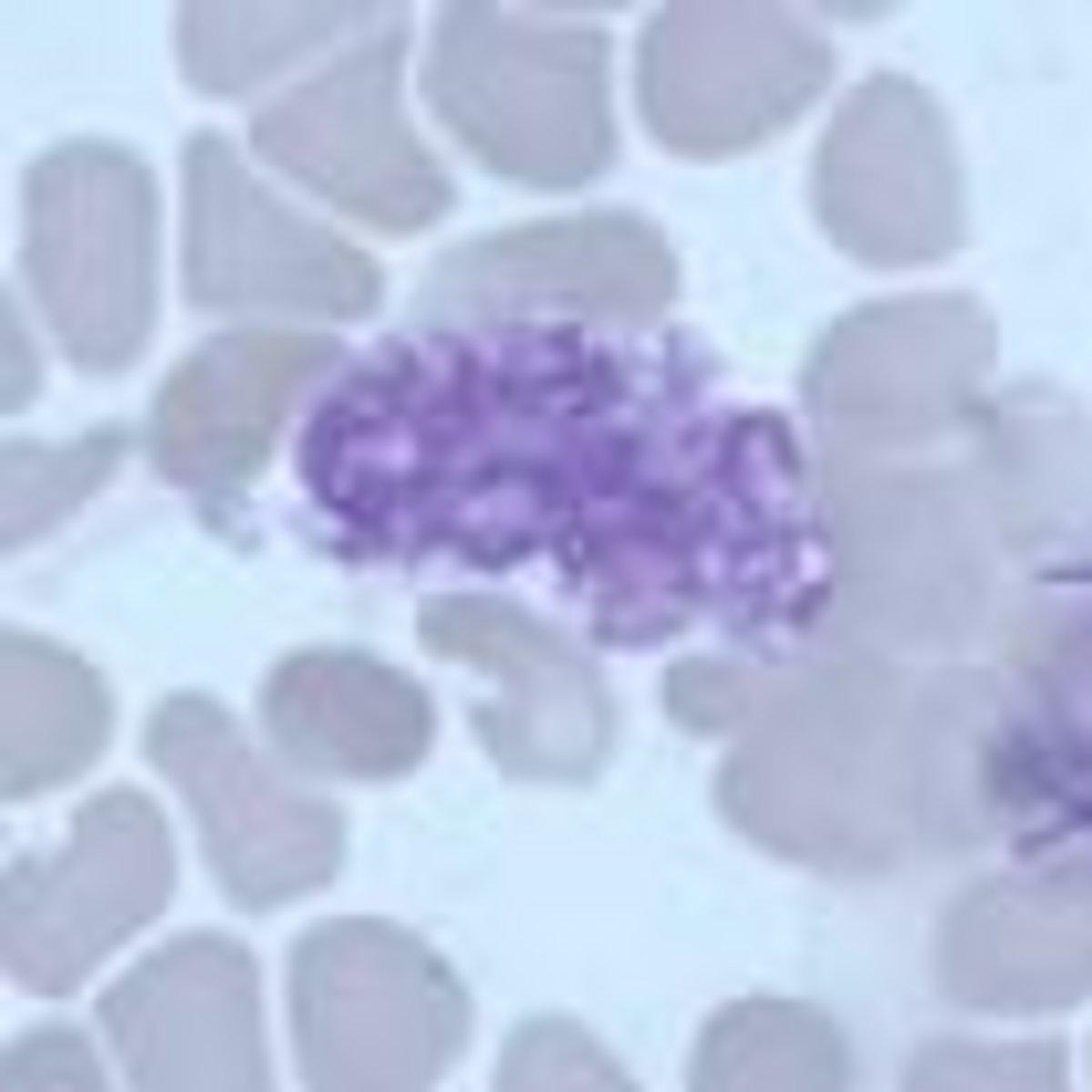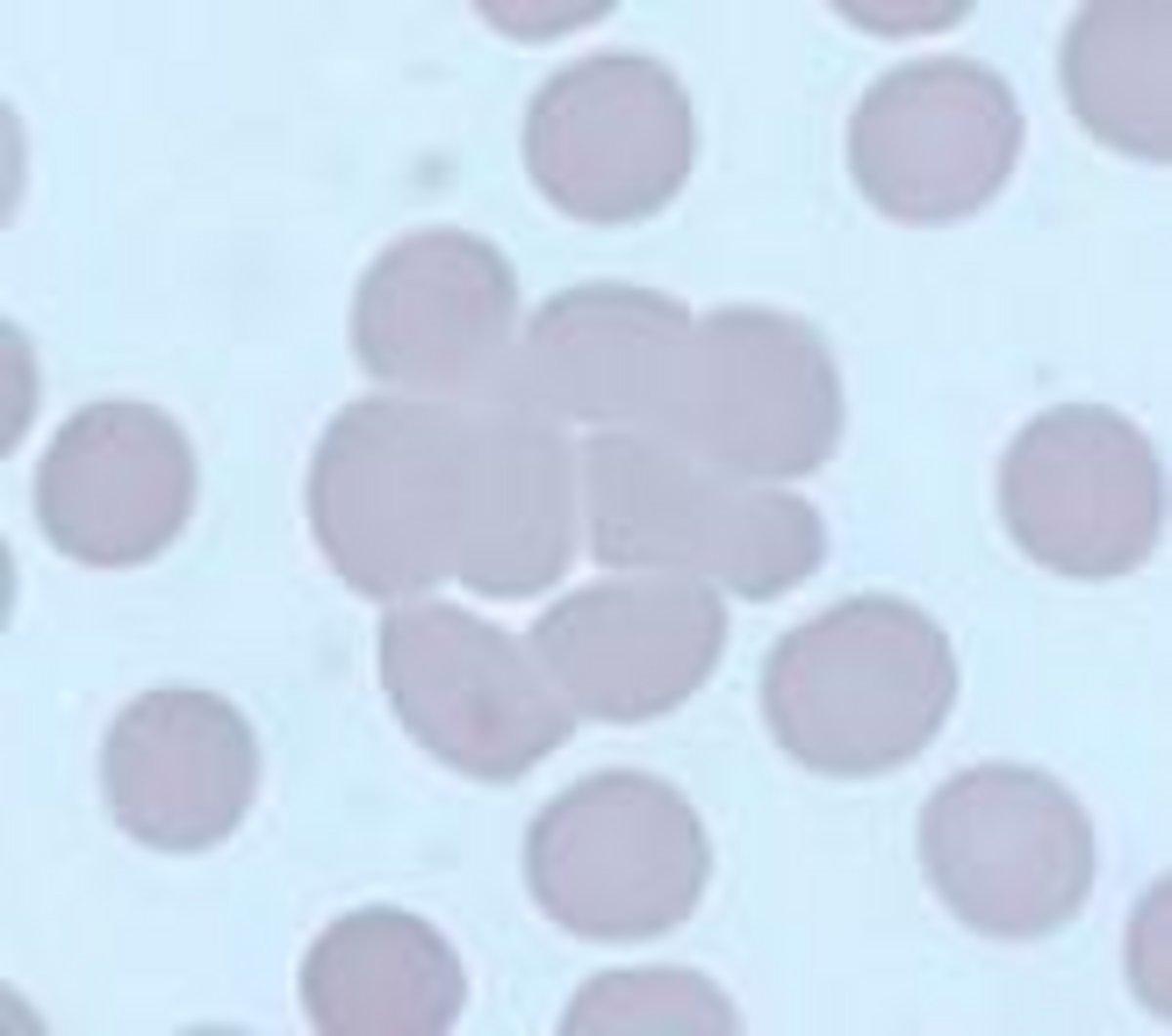

August 2023
Monthly Digital Case Study
August 2023 QSP Slides
Cold Agglutinin Disease
Yumizen H500 wins "Best New Clinical Instrumentatin of 2022"
Quiz
(PDF for print)
August 2023 QSP Slide 6:
RBC auto agglutination
Platelet clumping
FBC Results | |||
| WBC | 6.93 (10^3/mm3) | Neutrophils | 78.4% |
| RBC | 3.89 (10^6/mm3) | Lymphocytes | 12.3% |
| HGB | 13.8 (g/dL) | Monocytes | 7.3% |
| HCT | 36.3 (%) | Eosinophils | 0.7% |
| MCV | 93 (fL) | Basophils | 1.4% |
| MCH | 35.6 (pg) | ||
| MCHC | 38.1* (g/dL) | ||
| PLT | 65 (10^3/mm3) | ||
Clinical Details: Male 74 year old
Slide Information: Presence of agglutinins (visible at room temperature). Analyses performed after placing the EDTA tube in an incubator at 37°C (for 30 minutes). Note that the MCHC result remains high. Platelet result flag: presence of aggregates? False thrombocytopenia?
Expert's Comment: Residual presence of few red blood cells clumps. It's visible on the "RBCs wall", despite the passage of the sample in an oven at 37°C for 30 minutes. The result of red blood cells measured in impedance method seems plausible because it is not associated with a flag and is comparable to the result of red blood cells measured in optical methods. Platelet aggregates(+++): DO NOT REPORT the result of platelets. Add a comment of the type "underestimation of the number of platelets: cluster of PLT".
Cold Agglutinin Disease (CAD) is a form of autoimmune hemolytic anemia characterised by red cell autoagglutination (clumping of red cells ranging from a few red cells to numerous red cells) at cold temperatures (< 30ºC). The incidence is fairly rare and has an estimated incidence of about 1 per million people per year and comprises 15% of all autoimmune hemolytic anemia cases.
As most hematology analyzers use the aperture impedance principles which measure the number of cells and volume as they pass through the aperture, if there is red cell autoagglutination then several red cells will be counted as one cell. This causes the red cell count to be inappropriately low with a low Hct and high MCV. The other calculated parameters are also affected with the MCHC potentially being above the physiological limit (> 36 g/dL depending upon type of analyzer). Any MCHC above this value should be investigated as the cause could be presence of spherocytes, hyper lipidemia (causing an artificial increase in the Hb due to increase in turbidity) or RBC auto agglutination. Just looking at the sample may be sufficient to detect hyper lipidemia as the blood will have a pinkish coloration and if extreme RBC auto agglutination is present then the red cells may show separation from the plasma and appear as if clotted or if only mild then small discrete agglutinates may be seen if the sample is gently mixed end over end.
If RBC auto agglutination is suspected, then re-testing after warming the sample to 37ºC for a period of time will show an improvement in the MCHC to more acceptable levels, but in extreme cases the MCHC may never return to acceptable limits regardless of the time left at 37ºC. A blood film should be made from the sample at room temperature and at 37ºC (use slides and spreaders pre-warmed to 37ºC).
RBC agglutination in blood films is seen as irregular clumps of red cells and can be differentiated from the stack like appearance of red cells in the case of Rouleaux (see below).
A) RBC Agglutination
B) Rouleaux formation
As can be seen above, picture A shows a discrete clump of red cells sticking together, whereas in B) the cells appear to be in a line or stacked.
RBC CAD was first described in 1903 by Landsteiner (Nobel Prize winner for his discovery of the major blood group system and the development of the ABO system of blood typing which heralded the safe procedure of routine blood transfusion). Cold agglutination is now known to be caused by the production of IgM autoantibodies directed against either the I or I antigen. Since IgM is a large molecule, once bound onto red cells it can bridge the gap between the RBC overcoming the natural repulsive forces between cells therefore allowing spontaneous in-vitro agglutination. Bound IgM activates the complement pathway causing C3b to coat the cell, these cells loose surface membrane by receptor specific macrophages in the liver which results in extra vascular hemolysis. The degree of hemolysis is not due to the concentration of the IgM but the thermal amplitude of the IgM. The degree of anemia is varied in CAD and can range from severe and life threatening, to mild/moderate.
CAD may either be primary or secondary to another condition with a median age of onset of 72. CAD has been seen across a wide age group secondary to infective causes, such as M pneumonia or Infectious Mononucleosis (Epstein – Barr virus). The CAD presenting as an acute onset and is usually transient. In adult cases, CAD is a well-recognized entity that is often caused by a bone marrow clonal B-Cell lymphoproliferative disorder such as Lymphoma, CLL, IgM monoclonal gammopathy or Waldenstrom’s macroglobulinemia.
Additional testing includes direct antoglobulin test (Coombs test), IgM cold agglutinin titre test, reticulocytes, LDH, and Haptoglobin.
Cold Agglutinin Titer Test Explained
Serial dilutions of the patient’s plasma are mixed with a 5% solution of group O cells, incubated at 4ºC for a defined time period after which each dilution is checked for RBC agglutination. The titer is the highest dilution of the plasma at which RBC auto agglutination occurs. The tubes are then incubated at 37ºC and are examined for RBC agglutination if the agglutination was caused by a cold acting antibody, then the agglutination will disappear. A titer greater than 1:64 is considered positive.
We are proud to announce that our new Yumizen H500 benchtop hematology analyzer has won the Best New Clinical Instrumentation Award for 2022 at the Scientists’ Choice Awards®. The instrument is designed for small laboratories and is ideal for use in a variety of clinical laboratory environments and point-of-care (POC) settings or for anyone looking to upgrade from a 3-part to a 5-part differential technology solution. Requiring a sample of 20 µL whole blood and an analysis time of just 60 seconds, this makes the Yumizen H500 a highly flexible solution for rapid blood analysis in a multitude of situations, including point-of-care settings for pediatric care, oncology units and drug monitoring services. Read more.
Bibliography
Review Article – Cold Agglutinin Disease: Blood, 15 August 2013, Volume 23, Number 7
Transfusion Medicine and Hemostasi (Third Edition), Chapter 51c- Autoimmune Haemolytic Anaemia, Nancy L. Van Buren
Cold Agglutinin Titer Cold Agglutinin Disease News
Do you have any questions or requests? Use this form to contact our specialists.




